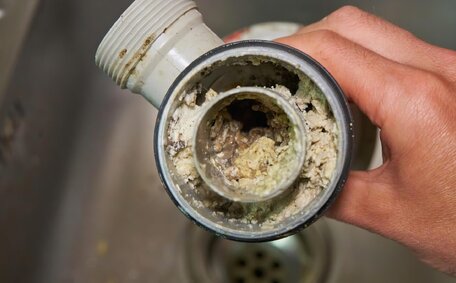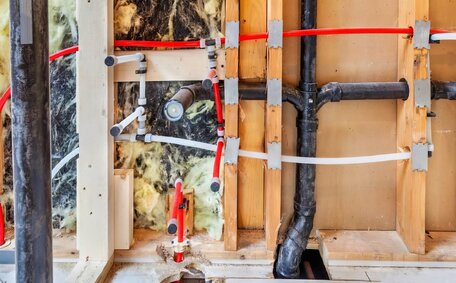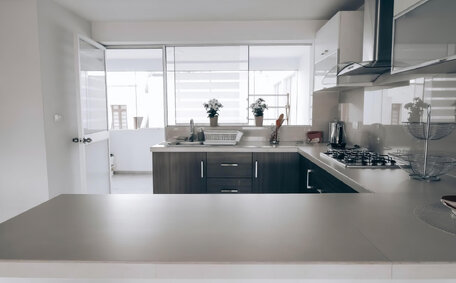Introduction to Pipe Relining
p>p>p>p>p>p>p>p>p>p>p>p>p>
When to Choose Pipe Relining Over Replacement
Pipe relining is often the superior option compared to full pipe replacement. Here are some of the key situations where relining your pipes makes the most sense:
- Your pipes are structurally sound but suffering from blockages, cracks, root intrusion or other internal damage. Relining will repair these issues without having to excavate.
- The pipe damage is localised in certain sections rather than affecting the entire length. Targeted relining is less invasive than replacing whole pipe runs.
- Your yard or landscaping features amenities like pools, gardens or sheds. Trenchless relining reduces disturbance to the property.
- The pipes run under or through structures like driveways, retaining walls or foundations. Relining avoids potentially compromising these structures.
- Your property is in a residential neighbourhood with minimal access for diggers and large equipment. Keyhole relining has a much smaller footprint.
- You want to avoid the mess and disruption of traditional open trench pipe replacements.
In summary, modern relining is great for restoring your pipes without major digging or destruction. Contact our team today to see if it’s suitable for your situation.
Pipe Materials Suitable for Relining
Pipe relining can be applied to repair and restore many of the common pipe materials used underground for plumbing systems:
- PVC (Polyvinyl Chloride) - One of the most widely used modern pipe materials. The flexible plastic material of PVC pipes makes them well-suited for relining.
- Copper - Copper is commonly used for water supply lines. Although rigid, the soldered joints and smooth interior of copper pipes work well with relining.
- Concrete - Concrete drainage pipes are durable but susceptible to cracks and breaks. Relining offers a non-invasive restoration.
- Clay - Although rigid, the seams and joints of old clay pipe systems can shift or detach. Relining bonds everything back together.
- Steel - Corrosion is the primary issue with steel pipes over time. Relining can add a protective new layer inside ageing steel pipes.
In many situations, relining provides a seamless structural repair for damaged pipes while avoiding the major disruption of full replacement. Our team can advise if your pipes are suitable candidates for this trenchless solution.
Finding a Reputable Pipe Relining Company
When looking for a professional pipe relining company, there are a few key factors to consider:
- Experience and Expertise - Look for an established company with extensive knowledge in pipe relining. They should be able to assess your situation and recommend the best solutions.
- Proper Licencing and Certifications - Make sure the company and technicians are properly licenced, insured and certified to perform pipe relining work.
- Range of Services - Choose a company that offers relining services for all the major pipe materials - PVC, concrete, clay, steel, copper etc.
- Reputation and Reviews - Check online reviews and testimonials to ensure consistently positive experiences with the company’s workmanship and customer service.
- Warranties - Opt for a company that stands behind their work with satisfactory warranties of at least 5 years.
- Minimal Property Damage - Look for trenchless methods that won’t destroy your landscaping or structures.
Taking the time to carefully select the right pipe relining company will ensure you receive a high-quality repair that lasts, with minimal re-excavation or replacement required in the future.
3 Main Pipe Relining Methods
There are three predominant methods used for pipe relining:
Cured-In-Place Pipe Lining
This involves inserting a resin-saturated felt tube into the damaged pipe and curing it in place using hot water or steam. The liner bonds to the original pipe, essentially creating a new pipe within the old one.
Inversion Lining
A resin-saturated liner is inverted or turned inside out with air pressure, coating the interior of the pipe. Once cured, it forms a smooth, jointless interior finish.
Spiral Wound Lining
A PVC strip coated with resin is wound spirally within the pipe to form a new jointless pipe wall. The spiral gaps are sealed with additional resin to make it watertight.
Our team of experts can advise on the best relining method for your specific situation. Get in touch today to learn more.
Cured-In-Place Pipe Lining
Cured-in-place pipe lining is a popular and effective method for restoring damaged pipes. This process involves inserting a flexible, resin-saturated felt tube into the damaged pipe.
Once in place, the liner is inflated against the inner walls of the pipe. Hot water or steam is then circulated through the tube, curing and hardening the resin into a smooth, jointless pipe lining. The resin bonds tightly to the original pipe, essentially creating a new pipe within the old one.
Cured-in-place pipe lining offers numerous benefits. It can repair pipe damage from cracks, leaks, root intrusion and corrosion without having to dig up and replace the pipe. The technology can be used on pipes made from a variety of materials like concrete, clay, steel and PVC.
Since it is a trenchless method, cured-in-place lining minimises disruption to properties, landscaping and infrastructure. It also reduces restoration time and costs compared to traditional pipe replacement projects.
Our team has extensive experience with cured-in-place pipe lining and other trenchless pipe restoration methods. We use state-of-the-art equipment and techniques to provide long-lasting repairs. Contact us today to schedule an inspection of your pipes to see if cured-in-place lining is the right solution for you.
Inversion Lining
Inversion lining is another popular trenchless method for restoring damaged pipes. This technique involves inverting or turning a resin-saturated felt liner inside out within the damaged pipe.
Using air pressure, the liner is inflated and pressed against the inner walls of the pipe. The resin then cures, hardening into a smooth, seamless new pipe lining. Like cured-in-place lining, this forms a jointless new pipe within the old pipe.
A key benefit of inversion lining is its ability to navigate bends and elbows in the pipe path. The flexible liner conforms smoothly around curved sections. This makes it well-suited for repairing pipes under structures or with tricky routes.
Inversion lining is a cost-effective and minimally disruptive option for restoring your damaged pipes without the major work of pipe replacement projects. Our expertise with trenchless pipe rehab methods allows us to determine when inversion lining is the optimal solution.
Spiral Wound Lining
Spiral wound lining is the third main type of pipe relining. This method involves installing a new pipe liner made of PVC strips coated with a thermoset resin.
The PVC strips are tightly wound in a spiral pattern within the damaged pipe to form a new interior pipe wall. Gaps between the PVC strips are filled and sealed with additional resin to create a watertight barrier.
Once the spiral wound liner is installed along the entire length of pipe, hot water is circulated to cure and harden the thermoset resin. This bonds the PVC strips into a seamless, jointless pipe lining.
Spiral wound lining is best suited for larger diameter pipes from 150mm and up. The spiral winding allows the liner to flex and conform within misaligned or offset pipe sections.
Our team has extensive experience with spiral wound lining and other trenchless pipe rehab methods. We can assess your pipes and recommend solutions to restore functionality and extend service life.
Choosing the Right Pipe Relining Method
p>p>p>
Pipe Relining Process Step-by-Step
p>p>p>p>p>p>
Pipe Relining Costs and Considerations
Pipe relining provides a cost-effective alternative to fully replacing aged or damaged pipes. Some of the key financial factors to weigh up include:
- Relining costs range from $80 - $300 per linear metre, while full replacement can be $200 - $500+ per metre.
- Additional savings come from avoiding landscaping damage or restoration needed with trenching.
- Disruption to homes or businesses is minimised, reducing associated expenses.
- Life expectancy of 15-50 years compares well to a new pipe’s lifespan.
- Ongoing maintenance and repairs are still required, reducing cost savings.
- Contingencies likeaccess issues or complex bends may increase relining costs.
- Government rebates for relining further offset costs in some regions.
While relining avoids the major upfront costs of replacing entire pipe systems, it is not necessarily cheap. Get in touch with our team and we can provide accurate quotes for your specific situation.
Pipe Relining Benefits and Advantages
Pipe relining provides a range of beneficial advantages compared to full pipe replacement:
- It is a trenchless method, avoiding major digging and destruction to structures, landscaping, driveways etc.
- With minimal surface disruption, it reduces restoration time and expense.
- The process is faster and less invasive than replacing entire pipe systems.
- Specialised resin liners can last 50+ years, rivalling a new pipe’s lifespan.
- It is more environmentally friendly than traditional pipe replacements.
- Relining can repair isolated damage rather than replacing whole pipe sections.
- It restores flow capacity and water pressure without replacing functional pipe sections.
- The technology works on a variety of pipe materials: PVC, concrete, clay, steel.
Modern pipe relining provides a durable, long-term solution while minimising disruption to property. Contact our team to see if it’s right for your plumbing needs.
Pipe Relining vs. Traditional Replacement
Pipe relining and full pipe replacement present two options for restoring your damaged plumbing system. Here is an overview of the relative pros and cons of each method:
Pipe Relining
- Pro: Trenchless - no digging or destruction to structures/landscaping
- Pro: Less invasive, faster, lower cost
- Pro: Can extend pipe lifespan 50+ years
- Pro: Suitable for many pipe materials
- Con: Still requires ongoing maintenance
- Con: Access issues may limit application
Full Replacement
- Pro: Brand new pipe system
- Pro: Resolves underlying failures needing full replacement
- Con: Major excavation work required
- Con: Much higher cost
- Con: Greater disruption, longer restoration
In summary, modern pipe relining provides an effective minimally invasive solution for restoring pipes and avoiding the major hassle of full system replacement. Contact our team to review your options.
FAQs About Pipe Relining
The key benefits of pipe relining include: no excavation or destruction to landscaping/structures, less invasive and faster than replacing pipes, extends pipe lifespan 50+ years, more environmentally friendly, repairs isolated damage only, restores flow capacity and pressure, suitable for various pipe materials like PVC, concrete, clay and steel.
How long does pipe relining last?With quality materials and proper installation, pipe relining can last 50 years or more, effectively giving your pipes a brand new lifespan. Warranties from relining companies often guarantee 15-50 years of expected durability.
Can you reline any type of pipe?Pipe relining works with most underground pipe materials including PVC, concrete, clay, steel, copper, cast iron and galvanised steel. However, badly corroded or collapsed pipes may need full replacement.
How do you know if pipe relining is right for you?An inspection by a professional plumber is the best way to determine if your damaged pipes are suitable candidates for pipe relining. Key factors include type and extent of damage, pipe materials and accessibility.
What’s the process of getting pipes relined?The relining process involves cleaning the pipes, video inspecting the damage, installing resin-impregnated liners through access points, curing the liners to harden the resin, and final testing to confirm the pipes are restored.
How long does it take to reline pipes?For a typical small residential home, pipe relining can usually be completed in one to three days. Larger commercial projects may take two to four weeks depending on the pipe system size.
Is pipe relining cheaper than replacing pipes?






